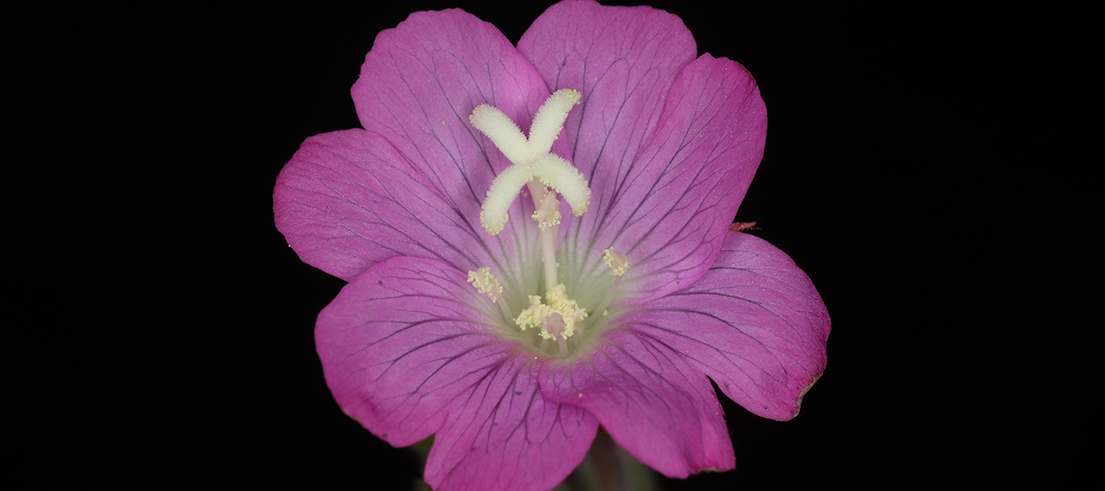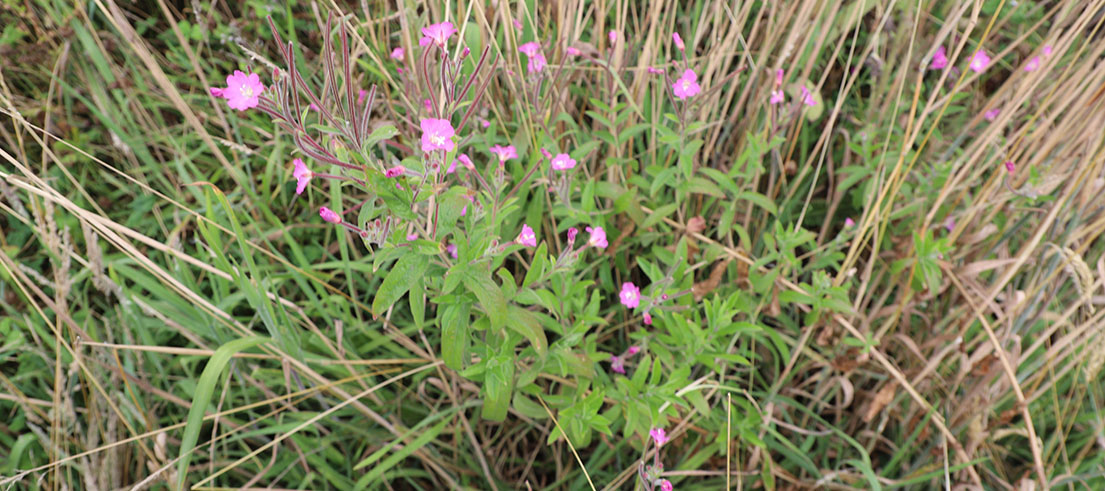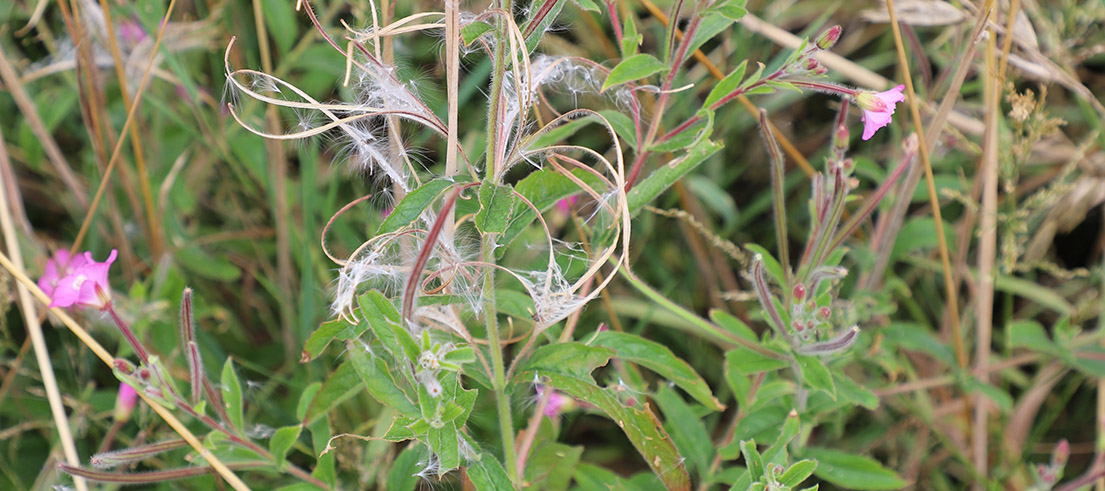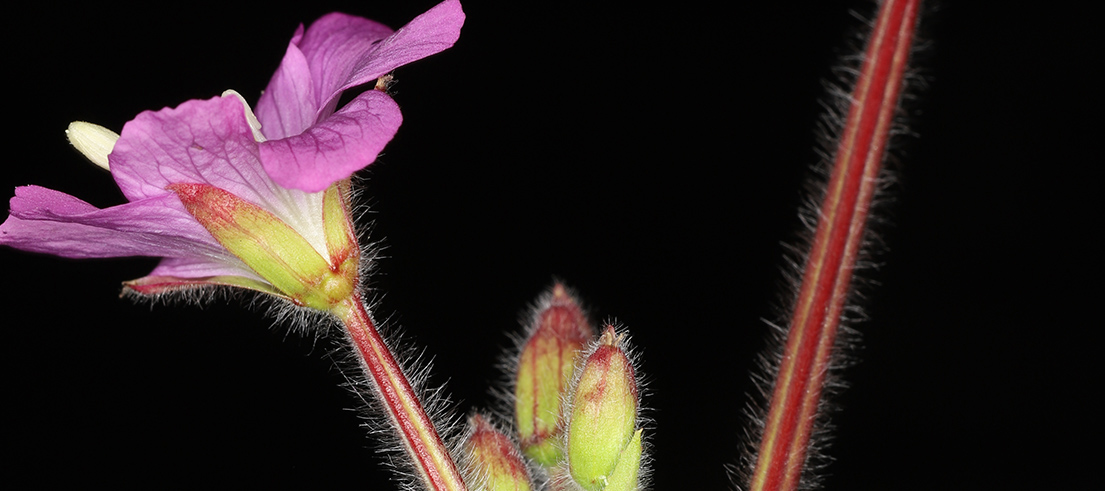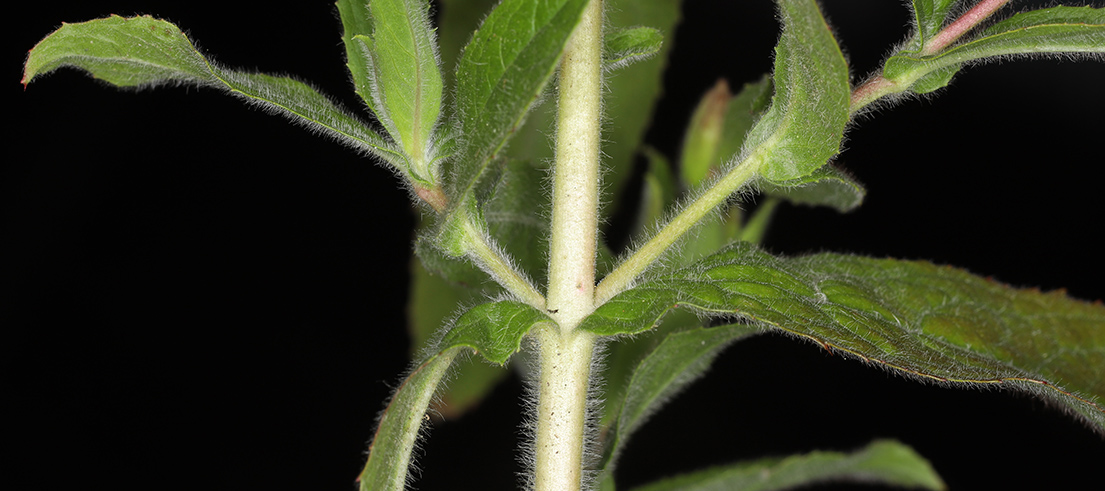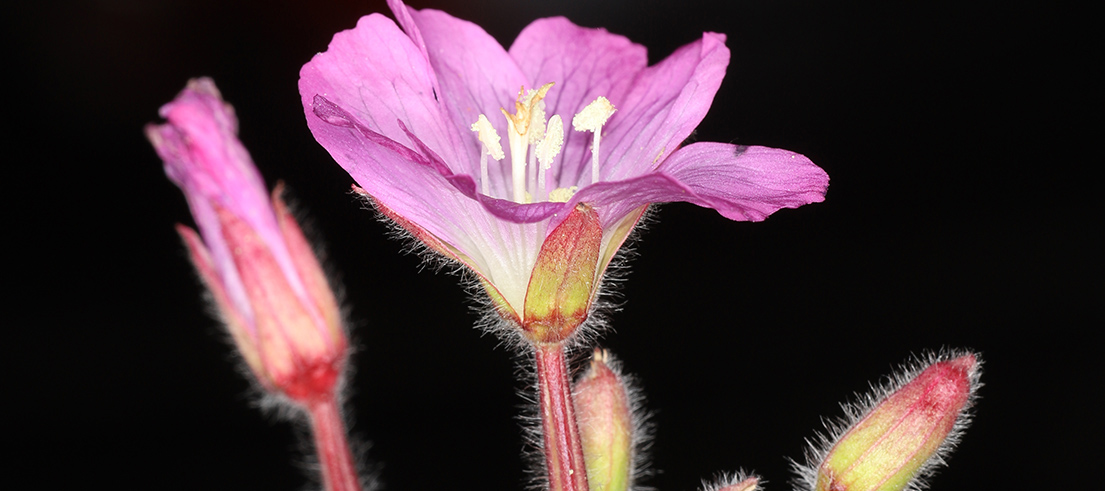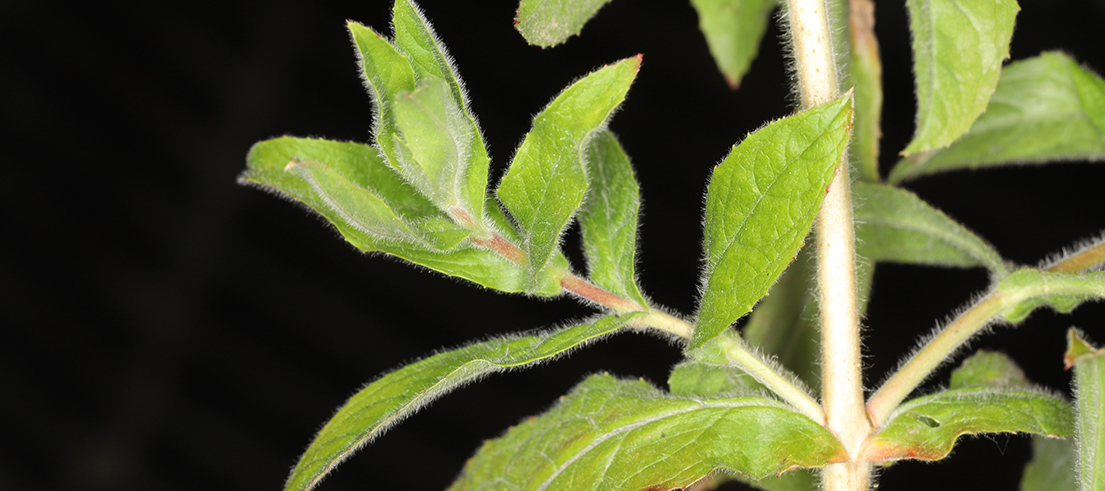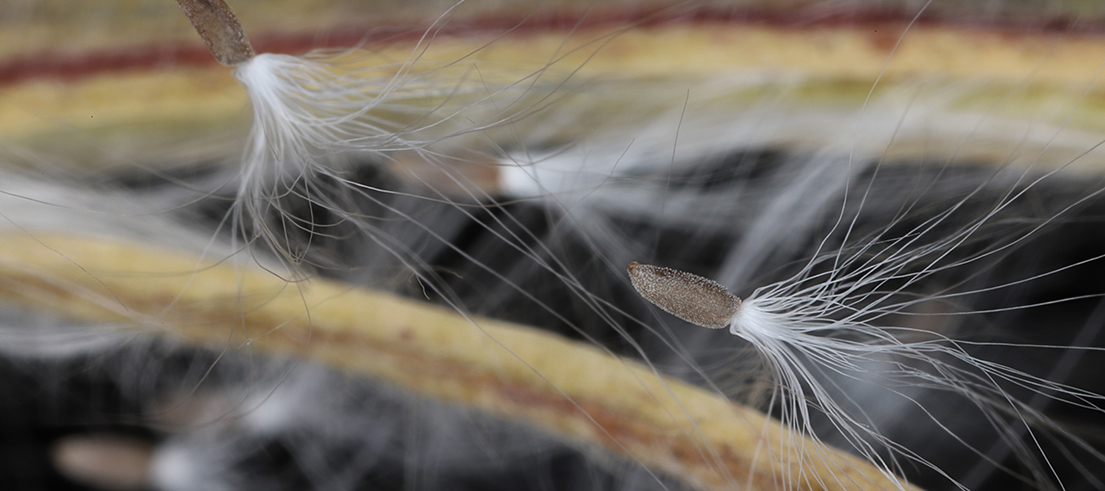Great willowherb grows to 2m tall and has pink flowers that occur in summer or autumn. It is an aggressive invader that outcompetes native species in wetlands and waterways.
Description
- Leaves are similar to willow-tree-shaped leaves, usually slightly hairy, in pairs (opposite one another), tooth-edged, and attach directly to the stems.
- Stems are erect.
- Pink flowers have a white centre, are 2–3cm in diameter, and petals have a notch on the edge.
- Seed pods are long and narrow, these split to release small seeds with long white hairs that help them disperse.
- Seeds are predominantly wind dispersed.
- Vegetative spread by rhizome roots and fragments when disturbed.
- Human-induced spread occurs through contamination of machinery, vehicles, gravel, soil, clothing and footwear.
- Habitats include wetlands, lakes, rivers, riverbeds, roadside ditches, and damp grasslands.
What you need to know
Aggressive invader that rapidly forms dense stands that outcompete native species in vulnerable wetland and waterway habitats.
Management approach
Great willowherb is declared an unwanted organism by the Ministry for Primary Industries (MPI) because it is capable of causing harm to the natural environment, physical resources or human health in Aotearoa/New Zealand.
These species pose a high risk to our environment, economy, recreation, and cultural values.
Rules
Any species declared a pest cannot be sold or be in a place where plants are being sold. Pest plants cannot be propagated, bred, multiplied, communicated, released, caused to be released, or otherwise spread.
Control
Do not attempt to undertake control of great willowherb yourself. Report any sightings to us.

